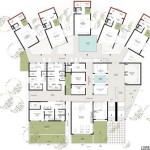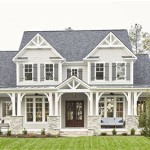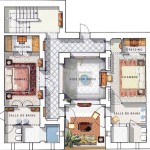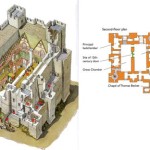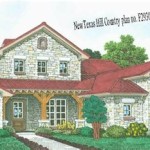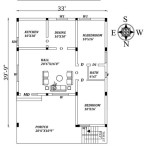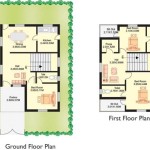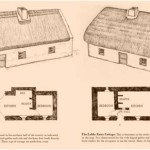Miniature Dollhouse Plans
Building a miniature dollhouse is a rewarding hobby that combines creativity, craftsmanship, and a touch of nostalgia. Whether one is a seasoned woodworker or a beginner, finding the right dollhouse plans is the crucial first step. This article explores the world of miniature dollhouse plans, offering guidance on selecting the perfect design, understanding various scales, and considering different construction materials and techniques.
Key Considerations When Choosing Dollhouse Plans
Choosing the right dollhouse plans is paramount to a successful project. Several factors influence this decision, including skill level, desired size, architectural style, and budget. Beginners might prefer simpler designs with fewer intricate details, while experienced builders might gravitate towards complex Victorian or Tudor-style houses. The available space for the finished dollhouse will also dictate the suitable plan size. Finally, the chosen materials and intended level of detail will impact the overall project cost.
Understanding Dollhouse Scales
Dollhouse scales represent the ratio between the miniature house and a full-sized house. The most common scale is 1:12, also known as one-inch scale, where one inch on the dollhouse represents one foot in a real house. Other popular scales include 1:24 (half-inch scale) and 1:48 (quarter-inch scale). Choosing the appropriate scale depends on personal preference, available space, and the desired level of detail. Larger scales offer more space for intricate furnishings and decorations, while smaller scales are more compact and manageable.
Popular Dollhouse Styles
Dollhouse plans encompass a variety of architectural styles, catering to diverse tastes. Victorian houses, with their elaborate gingerbread trim and intricate details, are a classic choice. Modern dollhouses offer sleek lines and contemporary features. Farmhouses and cottages evoke a sense of rustic charm, while Tudor-style houses showcase distinctive half-timbering. Choosing a style that resonates with one's personal aesthetic enhances the enjoyment of the building process and the finished product.
Materials for Building a Dollhouse
Dollhouse plans can be adapted to various construction materials. Plywood is a popular choice due to its affordability, durability, and ease of cutting. Hardwoods, such as basswood and walnut, offer a more refined finish and are favored by experienced builders. Cardboard and foam board provide cost-effective alternatives, particularly for beginners or quick projects. Selecting the appropriate material depends on the desired level of detail, budget, and building experience.
Free vs. Purchased Dollhouse Plans
Dollhouse plans are available through various sources. Numerous websites and online communities offer free plans, often for simpler designs. Purchased plans, available from specialized retailers and publishers, typically provide more detailed instructions, intricate designs, and professional-grade blueprints. Choosing between free and purchased plans depends on the complexity of the desired dollhouse, the level of support needed, and budget constraints.
Essential Tools and Supplies
Building a dollhouse requires specific tools and supplies. A craft knife or utility knife is essential for cutting wood, cardboard, or foam board. Wood glue, sandpaper, and clamps are necessary for assembling the structure. A ruler, measuring tape, and a square ensure accurate measurements. Additional tools, such as a scroll saw, drill, and miter saw, might be required for more complex projects. Gathering the necessary tools and supplies before starting the project streamlines the building process.
Building Techniques and Tips
Following the instructions provided with the dollhouse plans is crucial for a successful outcome. Dry-fitting pieces before gluing helps ensure proper alignment. Clamping glued pieces together provides a strong bond. Sanding rough edges ensures a smooth finish. Painting or staining the dollhouse adds a personalized touch. Taking the time to carefully execute each step leads to a well-constructed and aesthetically pleasing finished product.
Adding Details and Finishing Touches
Once the basic structure of the dollhouse is complete, adding details brings it to life. Exterior details, such as shingles, siding, and trim, enhance the architectural style. Interior features, including wallpaper, flooring, and miniature furniture, create a realistic and inviting atmosphere. Landscaping, with miniature trees, shrubs, and pathways, completes the scene. Personalizing the dollhouse with unique details reflects individual creativity and enhances its charm.
Resources for Dollhouse Builders
Numerous resources are available to assist dollhouse builders. Online forums and communities provide a platform for sharing tips, asking questions, and showcasing completed projects. Books and magazines dedicated to miniature building offer inspiration and detailed instructions. Specialty stores offer a wide range of miniature furniture, accessories, and building supplies. Utilizing these resources enhances the building experience and provides access to a supportive community.

9 Free Dollhouse Plans Little Of Miniatures

Dollhouse Plans Girl Toys 3d Model For Laser Cutting Svg

Free Doll House Plans Dolls Barbie

12 Free Dollhouse Plans That You Can Diy Today Doll House Miniature Houses

Diy Miniature Doll House Building Kit Satisfied Time Grey

Doll House Plans Miniature Houses

Assemble Diy Wooden House Dollhouse Kit Miniature Doll Houses Toys With Furniture Led Lights Gift Fruugo No

Miniature Modern Must Have S Barbie House Furniture Dolls Interiors Doll Plans

12 Free Dollhouse Plans That You Can Diy Today Doll House Dolls Interiors Miniature Rooms

Assemble Diy Wooden House Dollhouse Kit Miniature Doll Houses Toys With Furniture Led Lights Gift Fruugo Qa

